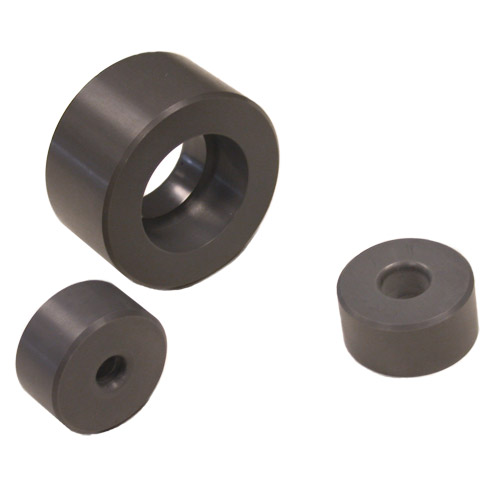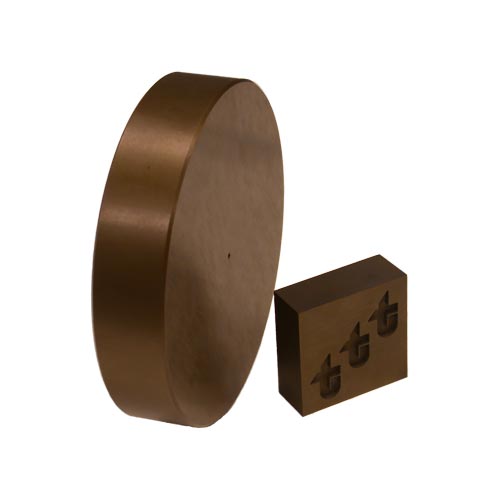Here the term sialon is reserved for the aluminium–silicon–oxyniride alloys of silicon nitride, which have been sintered into hard, high strength materials using yttrium oxide as a sintering aid.
As alloys of silicon nitride, sialons exist in three basic forms. Each form is iso–structural with one of the two common forms of silicon nitride, beta (β) and alpha (α) and with silicon oxynitride. The relationship between that of sialon and silicon nitride is similar to that between brass and pure copper. In the later case, copper atoms are replaced by zinc to give a better and stronger alloy than the mother metal. In the case of sialon, there is substitution of Si by Al with corresponding atomic replacement of N by O, to satisfy valancy requirements. The resulting ‘solution’ (sialon) has superior properties to the original pure solvent (silicon nitride).
The fundamental structural unit of silicon nitride (Si3N4) is the SiN4 tetrahedron, which is analogous to the SiO4 structural units in silicates. The tetrahedra are linked together into a rigid three dimensional framework by sharing corners. The Si–N bonds are short and very strong. This strong, rigid, compact structure is responsible for many of the important properties of Si3N4.
β–Sialon
β–sialon is based upon the atomic arrangement existing in β–Si3N4. In this material, Si is substituted by Al with corresponding replacement of N by O. In this way up to two–thirds of the silicon in β–Si3N4 can be replaced by Al without causing a change in structure. The chemical replacement is one of changing Si–N bonds for Al–O bonds. The bond lengths are about the same for the two cases but the Al–O bond strength is significantly higher than that of Si–N.

In sialon the Al is co–ordinated as AlO4 and not as AlO6 as in alumina (Al2O3). Therefore, in β–sialon the bond strength is 50% stronger than in Al2O3. Thus sialons intrinsically have better properties than both Si3N4 and Al2O3.
β–sialon is produced by International Syalons using yttrium oxide (Y2O3) as a sintering aid and marketed under the trade name Syalon 101. During sintering at temperatures above 1400°C, the oxides react to form an yttrium–aluminium–oxynitride liquid which is necessary for densification. This then forms an intergranular glass on cooling. Syalon 101 is a fully dense ceramics characterised by high strength and toughness.
As a solid solution, the vapour pressure of β–sialon is lower than that of Si3N4 and as a result the sialon will form more liquid at a lower temperature with Y2O3. Sialon is thus more easily densified using normal sintering techniques. Furthermore, it should be noted that the lower vapour pressure of sialon reduces decomposition at high temperatures so that the sialon is thermodynamically more stable than Si3N4.
These β–sialons are particularly useful in applications such as non–ferrous molten metal handling, in which thermal shock resistance and chemical stability in contact with molten metals is required for use as components such as thermocouple protection sheaths and heater and riser tubes.
α–Sialon
The second form of Si3N4 with which sialon is iso–structural is α–Si3N4. The stacking structure in α–Si3N4 is different from β–Si3N4 in that the long ‘channels’ which run through the β structure are blocked at intervals. This gives rise to a series of interstitial holes. In α–sialons, Si in the tetrahedral structure is replaced by Al with limited substitution of N by O. Valancy requirements are satisfied by modifying cations occupying the interstitial holes. In this way cations of yttrium (Y), calcium (Ca), lithium (Li) and neodymium (Nd) for example can be incorporated into the structure.
International Syalons market an α–sialon under the trade name Syalon 050. α–sialons are intrinsically hard materials. Hardness can be simplistically related to bond energy density, which for α–sialons is high, giving extreme hardness. In addition, during sintering and subsequent heat treatment of α–sialons such as Syalon 050, the intergranular phase is taken up into the structure resulting in a dense, hard ceramics which is almost free of a grain boundary phase. This results in the material properties being retained at up to 1400°C. This is of great importance in wear mechanisms; hot hardness above 1000°C is required for cutting tips, for example.
An important added advantage is oxidation resistance. The absence of a grain boundary phase in this ceramic means that the transport of diffusing species necessary for oxidation to take place at higher temperatures is restricted (there is limited liquid phase to assist transport), so that oxidation resistance is improved. These sialons have excellent resistance to abrasive wear and are having an impact as nozzles for shot blasting, particularly for highly aggressive grits. Also, the absence of a grain boundary phase makes them attractive candidates for high-temperature applications, such as in gas turbines.

Composite Sialons
Sialons, due to their excellent sinterability, can be made into composite ceramics especially with other nitride ceramics. As such, International Syalons have developed a number of composite grades of sialon.
The first, Syalon 501, is based on β–sialon and is an electrically conductive grade which can be electro-discharge machined into complex shapes. It possesses many of the excellent properties of Syalon 101 and has found application as extrusion dies and die pressing dies.
Syalon 110 is a composite, again based on Syalon 101, which possesses improved resistance to attack by steel and outstanding thermal shock resistance. It has found application as a break ring for the horizontal continuous casting of steel.
